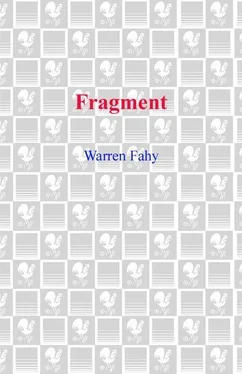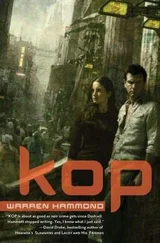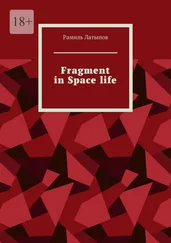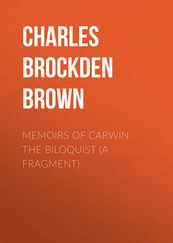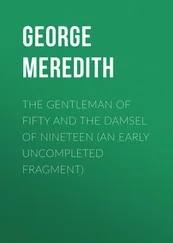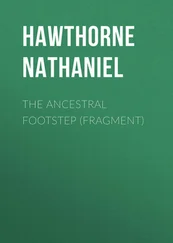Warren Fahy - Fragment
Здесь есть возможность читать онлайн «Warren Fahy - Fragment» — ознакомительный отрывок электронной книги совершенно бесплатно, а после прочтения отрывка купить полную версию. В некоторых случаях можно слушать аудио, скачать через торрент в формате fb2 и присутствует краткое содержание. Жанр: Путешествия и география, на английском языке. Описание произведения, (предисловие) а так же отзывы посетителей доступны на портале библиотеки ЛибКат.
- Название:Fragment
- Автор:
- Жанр:
- Год:неизвестен
- ISBN:нет данных
- Рейтинг книги:5 / 5. Голосов: 1
-
Избранное:Добавить в избранное
- Отзывы:
-
Ваша оценка:
- 100
- 1
- 2
- 3
- 4
- 5
Fragment: краткое содержание, описание и аннотация
Предлагаем к чтению аннотацию, описание, краткое содержание или предисловие (зависит от того, что написал сам автор книги «Fragment»). Если вы не нашли необходимую информацию о книге — напишите в комментариях, мы постараемся отыскать её.
Fragment — читать онлайн ознакомительный отрывок
Ниже представлен текст книги, разбитый по страницам. Система сохранения места последней прочитанной страницы, позволяет с удобством читать онлайн бесплатно книгу «Fragment», без необходимости каждый раз заново искать на чём Вы остановились. Поставьте закладку, и сможете в любой момент перейти на страницу, на которой закончили чтение.
Интервал:
Закладка:
“I’ve never heard of such a thing,” Otto disagreed. “Not fucking possible!”
“Maybe it has specialized ganglia for speeding up its attack or evasive reflexes, or to help with digestion like some arthropods do,” Andy offered.
“Well, we won’t be able to determine that from a dissection.” Otto frowned. “We would have to do a detailed neurological study of live specimens. But we’ll see if we can follow the nerves later. Moving toward the posterior of the animal we see very powerful, kangaroo-like hind legs, with an extra joint where the tibia would be. These limbs are connected to a wide subcutaneous pelvic girdle that is ring-or tube-shaped like the other rings. The tail-”
“I don’t think that’s a tail,” Quentin said.
“It’s a leg,” Nell said.
Otto scowled.
“Pull it out from under the body,” Nell suggested.
“OK. The tail has a wide base. It is very stiff. It is long and broad, folding more than halfway under the animal to the chest area between the forelegs. The dorsal surface of the tail, which is the bottom when under the animal, is covered with ridged plates and spines in a geometric pattern.”
“Traction pads.” Nell indicated the bottom of the “tail.” “And cleats-like the bottom of a running shoe!”
“Whoa,” Quentin exclaimed. “It must rip that tail backwards under it to get air!”
“The taillike appendage appears to be a sort of ninth leg.” Otto shook his head in amazement. “This leg might be used to propel the animal higher or faster during leaps.”
“It kind of seems like an arthropod that turned into a mammal. Doesn’t it?”
“Yeah,” Andy said. “I was just thinking that. Spiders are furry crabs, or at least chelicerates.”
“This is no arthropod,” Otto scoffed. “With a mouth and jaws like that? And this is fur, not tarantula hair!”
“It’s bleeding again.” Nell pointed.
“The subject is leaking some light blue fluid that may be blood.”
“They must have hemocyanin. Copper-based blood, like marine arthropods. See? You can see it turning bluer as the liquid hits the air.”
“I’m extracting a blood specimen for analysis.” Otto took a hypodermic needle from a dissection kit affixed to the inside wall of the trough.
“Copper-based blood?” Nell looked at Andy.
“Maybe hemoglobin, too,” he said. “Some iron-based blood pigments are purple.”
“That’s blue,” Quentin said. “Are you color-blind?”
“No, I’m not color-blind!” Andy glared at Quentin.
“Could have fooled me.” Quentin was looking at Andy’s pink, yellow, and blue Hawaiian shirt.
Nell patted Quentin on the shoulder. “Let’s get a look inside this thing.”
“I’m now sealing the blood sample,” Otto narrated.
“Cut a little tissue sample, too, Otto,” Quentin told him. “That’ll make it easier to get a nucleic acid sample in case the blood doesn’t have any circulating cells.”
“Yeah, yeah.” Otto expelled the hypo full of blue liquid into a tube and capped it. Then he placed the sample into the specimen cradle, along with a small slice of tissue that he placed in a quarter-sized petri dish. After covering the petri dish, he pushed the cradle into the airlock. “OK, Quentin, let’s get a genetic analysis on this thing.”
Quentin sprayed the outside of the containers with isopropyl alcohol and then flooded the mini-airlock with yellow-green chlorine dioxide gas. When the gas was vacuumed out he retrieved the specimens through the airlock and handed them to the lab technicians, who immediately prepared blood agar cultures. One started grinding tissue samples in what resembled a test tube-sized blender. Attached to a high-speed tissue homogenizer, this glass chamber prevented the dispersal of any potentially harmful aerosol from the specimen into the air of the lab.
“We could be getting parasite DNA in the sample,” Nell told them. “Can you tell the difference?”
“Yep, we can distinguish samples,” one of the technicians answered.
Working in biological safety hoods along the other side of Section One, the technicians processed the samples, pipetting the blood and tissue and homogenizing them, adding reagents, mixing, centrifuging, decanting, heating, cooling, and finally pipetting the processed material onto other plates or into specimen tubes.
“My God, this is heaven, Otto,” Nell said, admiring the array of machines on the other side of the lab. “Do you know how many weeks it would have taken me to do this work as an undergrad at Caltech?”
“Yeah, this baby’s got more toys than a lab geek’s wet dream.” Quentin smiled proudly.
“I can still remember when I had to pour my own electrophoretic gels for molecular samples. Now it’s as easy as putting a piece of bread in a toaster.”
“Well, more like making cinnamon toast,” a technician remarked drily.
Nell laughed. “We even had to generate our own taq polymerase.”
“Give me a break,” Andy pleaded.
“I’m with you, Nell,” Quentin said. “You youngsters don’t appreciate how amazing these instruments are. God, Andy, when are you going to learn some molecular biology, dude? You’re more of a dinosaur than I am. PCR didn’t even exist when I was in college, but I saw where things were heading, and learned this stuff before I got left behind.”
“Well, somebody has to keep their feet in the mud,” Andy snapped, defensively.
“Bravo,” Nell said. “We need both right now, Andy-field naturalists and gene jocks. That machine Steve is using-hi, Steve!- is a Bioanalyzer. It will tell us in a few seconds how pure our RNA extractions are and how much RNA we got in each sample. It’s a microscopic electrophoresis unit and gel scanner that examines all the samples on those little chips that look like dominoes.
Each one of those dots is equivalent to a whole electrophoretic gel from the old days, when I was in my teens.” She pointed. “And when an RNA sample is put into the thermocycler right there, it gets reverse transcribed, making our cDNA library, and in the same tube it does the PCR. That amplifies the cDNA into thousands of copies so we can sequence the genes in this auto-sequencer right there, or test it in that micro-array machine over there.”
“You lost me at Parcheesi,” Andy grumbled.
“Dominoes,” Quentin teased.
“It’s actually pretty simple, Andy,” Nell told him. Her eyes glowed with excitement. “All living cells have RNA, which is a message transcribed from the genes in the DNA. So when we run the reactions backwards with an enzyme called reverse transcriptase, we make clones of the DNA-the cDNA-from the RNA! Then, to tell what these critters are related to, we can either run the cDNA on micro-array chips, which is really fast, sequence the DNA, or else isolate, clone, and sequence the actual genes from the cell’s DNA, which takes a little longer. You could do any of this yourself after a couple hours of training, Andy.”
“I learned the theory in my Bio courses,” he said. “I never used all these machines. I didn’t think normal people could work these things.”
“Who said you’re normal?” Quentin taunted.
“Andy,” Nell said, preempting his umbrage, “these guys in the lab coats wouldn’t know an arthropod from an anthropoid unless you handed them a gene sequence. No offense, guys.”
Otto cleared his throat. “Can we get back to the dissection while the gene jocks do their thing?”
“Carve that turkey!” Quentin commanded in agreement.
Nell swiveled on her stool and put her pencil to a fresh page on her sketchpad as Otto turned the animal onto its back and rinsed it again.
“The fur on the ventral surface of the specimen is light tan in color. The specimen appears to have an orifice on the central underbelly, probably for waste excretion, between the central legs.
Читать дальшеИнтервал:
Закладка:
Похожие книги на «Fragment»
Представляем Вашему вниманию похожие книги на «Fragment» списком для выбора. Мы отобрали схожую по названию и смыслу литературу в надежде предоставить читателям больше вариантов отыскать новые, интересные, ещё непрочитанные произведения.
Обсуждение, отзывы о книге «Fragment» и просто собственные мнения читателей. Оставьте ваши комментарии, напишите, что Вы думаете о произведении, его смысле или главных героях. Укажите что конкретно понравилось, а что нет, и почему Вы так считаете.
